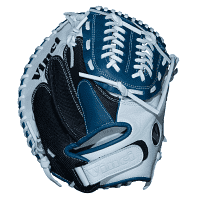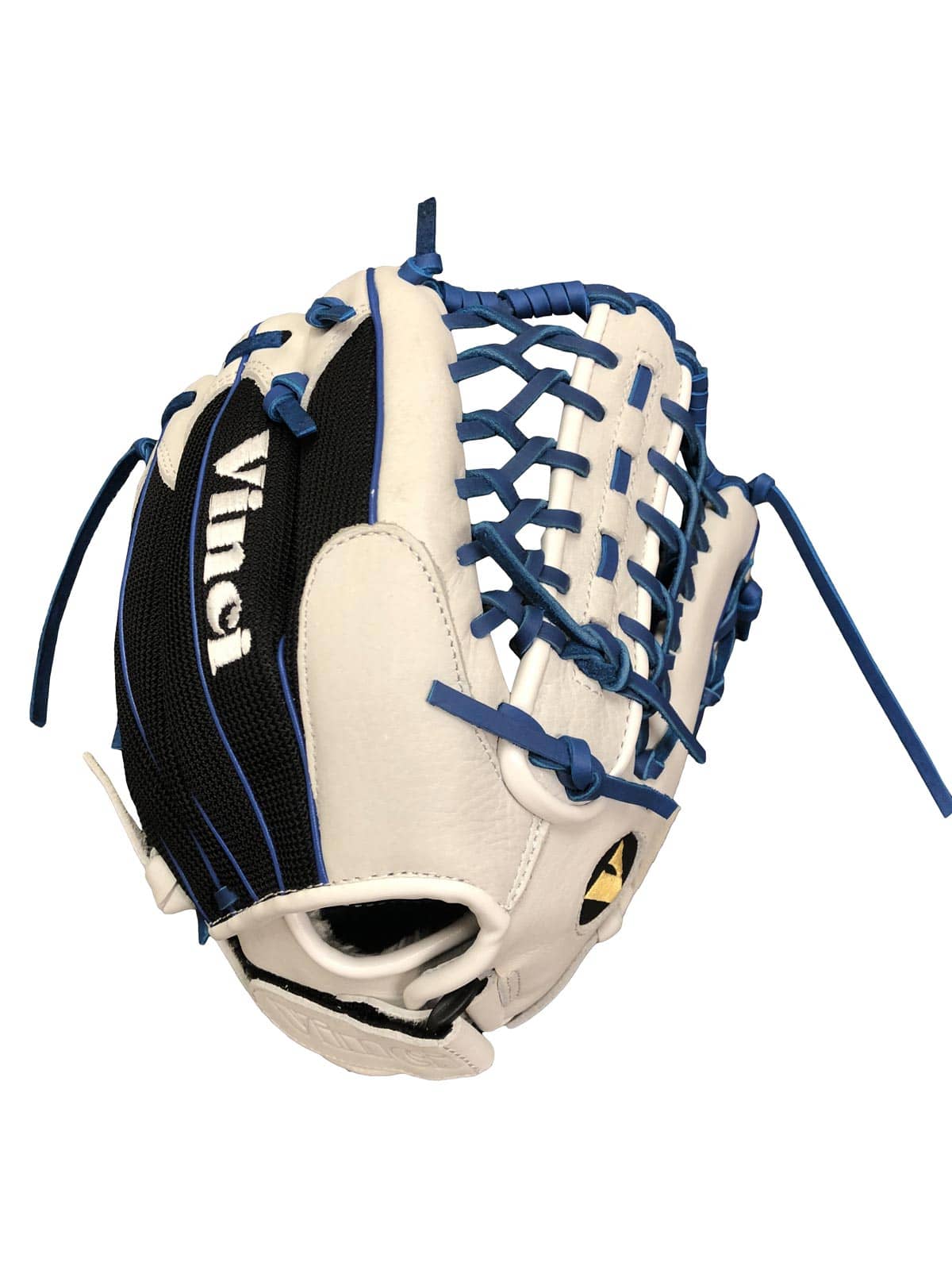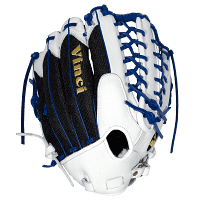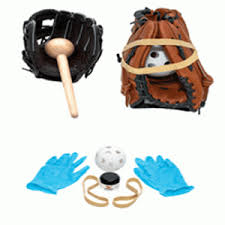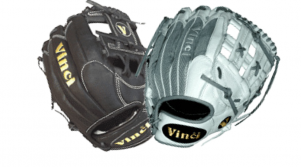
What are the differences between a baseball glove and softball glove?
Many people often ask, what is the difference between a baseball glove and a softball glove? Although it is possible to play softball with a baseball glove, a softball glove is definitely more suitable for the game. The reason for this is due to the size of the ball used in each game. A regulation softball is significantly larger than a regulation baseball. A softball measures between 11.88 and 12.13 inches in circumference and weighs between 6.25 and 7.00 ounces; a baseball measures between 9.00 and 9.25 inches in circumference and weighs between 5.00 and 5.25 ounces (Source: Dummies.com). The size, pocket depth and fitting of the glove all affect the ease and accuracy of use when playing baseball or softball. But like anything else, this decision is totally up to the player. Both types of gloves are available in a variety of sizes, colors, and web, back, and leather options.
What is a baseball glove?
A baseball glove or mitt is a large leather glove worn by baseball players of the defending team, which assists players in catching and fielding balls hit by a batter or thrown by a teammate (Source: wikipedia). Both baseball gloves and softball gloves come in several varieties based on the position being played. Both baseball and softball gloves have the following: Catcher’s mitts, First baseman’s mitts, Infielders’ gloves, Pitchers’ gloves, Outfielder’s gloves, Right-hand throw gloves, and Left-hand throw gloves.
- Catcher’s Mitts, called so because they do not have fingers separated, like you would compare a pair of winter gloves to a pair of mittens, hence why the term ‘mitts’ is used.
- First Baseman’s Mitts are also called ‘mitts’ for the same reason. They tend to be wider and longer than infielder gloves and outfielders gloves. This helps the player pickup balls thrown by infielders.
- Infielders’ Gloves are smaller gloves compared to a first baseman’s mitt. The pockets are shallower, and the webbing on an infielders’ glove is often an open web to allow any dirt to flow through glove when the player catches a ground ball.
- Pitchers’ Gloves mostly have a closed webbing so that the pitcher can conceal the ball as not to reveal the grip he or she has on the ball. They also tend to be on the smaller side in glove comparison.
- Outfielder’s Gloves are longer and have a deeper pocket. This helps the player pick up ground balls easier as well as catch fly balls.
So, what is the difference between a baseball glove and a softball glove?
Glove Size
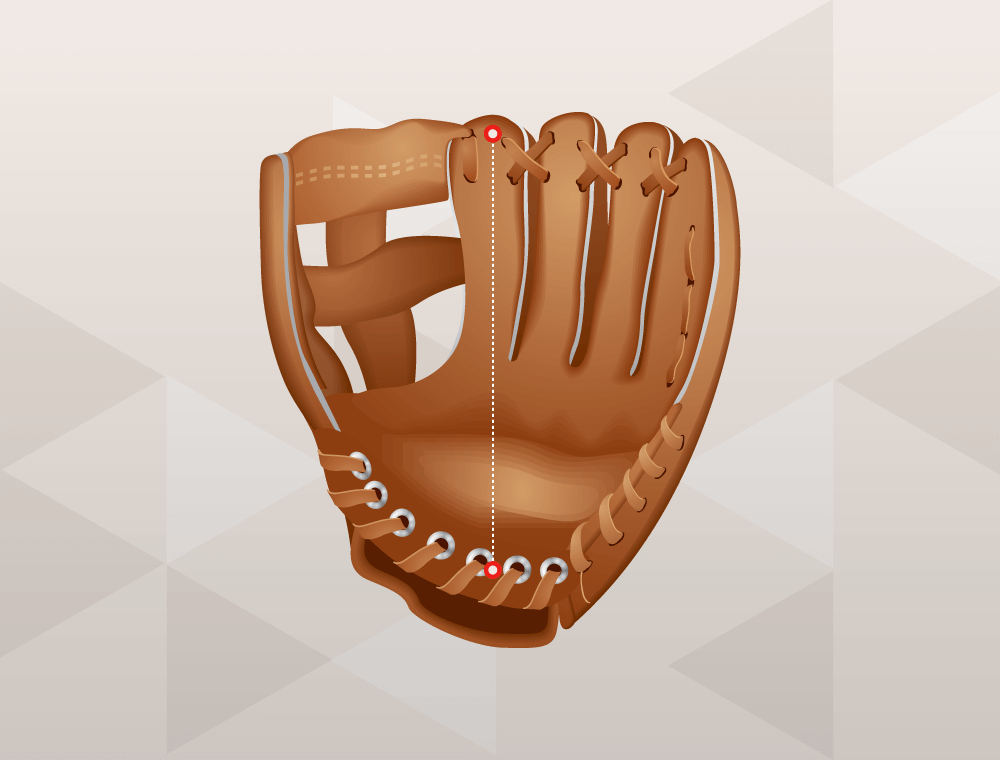
When it comes to choosing a glove for either game, size does play a role because of the differences between the two games. Compared to baseball gloves, softball gloves are larger. Softball gloves are larger because the ball is bigger than a baseball. For example, the average size of a baseball outfielders glove is 13 inches, whereas the average size of a softball outfielders glove is 15 inches. Another factor that plays a part in the size of the glove a player needs is the position that they play. In both games an infielders gloves and a pitcher gloves are usually smaller than outfielders gloves and catchers mitts. Outfielders’ gloves are longer and wider than infielders’ gloves to help them catch high deep incoming balls and make those diving catches with ease.
Pocket Size
Pocket size is also different between the two types of gloves. Meaning the depth of the pocket and the length of their pockets. The reason for this is because of the size of the ball the player has to catch. Baseball gloves are smaller than softball gloves so the size of the pockets have to accommodate that aspect. Baseball gloves have a smaller more shallow pocket and may also be slightly longer in length compared to a softball glove, which have a much deeper pocket and are shorter in length. The deeper, shorter pocket allows for better control and less spin of the ball. Both gloves pocket designs are tailored toward the size of the ball used in each game.
How the Baseball Glove and Softball Glove Fit
The fitting also plays a part in the difference between the gloves. While how the glove conforms to your hand should be the same for both of the gloves, how tight it fits to your hand varies. Softball players usually prefer their gloves to have tighter fit to their hand. Having a tighter fitting glove helps the player have better control of the ball. This is why most softaball gloves or fast pitch gloves have a velcro strap back. Fast pitch softball gloves often have a smaller opening for the hand to suit the market of fast pitch players mostly being female athletes.
Summary
So these are the main differences are glove size, pocket, and fitting all play a part, as well as the position being played. Choosing a glove suited for the game you are playing is important but the decision is ultimately up to the player.
FAQ
1). What is the main difference between a baseball glove and a softball glove?
The main differences are the size, pocket depth and fitting of the glove. They all affect the ease and accuracy of use when playing baseball or softball. But like anything else, this decision is totally up to the player. Both types of gloves are available in a variety of sizes, colors, and web, back, and leather options.
2). Why do baseball gloves and softball gloves come in different sizes?
Compared to baseball gloves, softball gloves are larger. Softball gloves are larger because the ball is bigger than a baseball. For example, the average size of a baseball outfielders glove is 13 inches, whereas the average size of a softball outfielders glove is 15 inches.
3). Why does pocket size matter when choosing a baseball glove vs a softball glove?
Pocket size is also different between the two types of gloves. Meaning the depth of the pocket and the length of their pockets. The reason for this is because of the size of the ball the player has to catch. Baseball gloves are smaller than softball gloves so the size of the pockets have to accommodate that aspect.
4). What is the best glove for you? Ask our glove fitting expert by emailing Info@Vincipro.com, texting or calling 804-651-0957
If you are looking for a high-quality baseball or softball glove for your next game, choose Vinci.
[product-slider-for-woocommerce id=’27650′]

